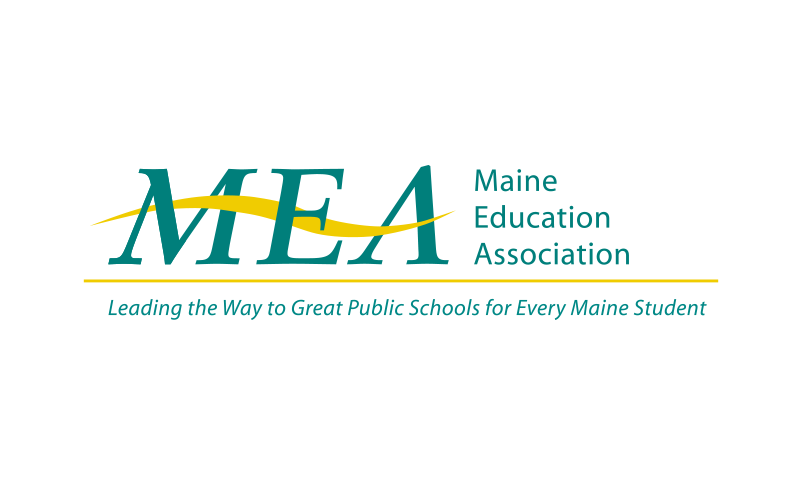The Maine DOE has sent guidelines to superintendents regarding summer programming in districts where they choose to operate in-person programs. You can read that full DOE guidance below and here.
In all instances where a school district is considering offering summer programming, the school district and the local association should be in communication and seek to collaborate around any plans. The MEA encourages all stakeholders to be reasonable with each other and work together to come up with ways to best address an offering of summer programming given the continued extraordinary circumstances.
While the points below are the recommendations of the MDOE for summer programming, MEA knows that school districts are starting to put together plans for school next fall, as well. The MEA continues to work to develop and advocate for plans and procedures that put the health and safety of students and our members as a number one priority in any return to school plans.
MEA believes the MDOE guidelines for summer programming should be strictly followed and enforced. Local associations should seek written agreements that these guidelines will be strictly followed and enforced in order to provide the greatest level of safety possible for the well-being of all concerned.
Previous guidance from the MEA still applies related to cloth face masks and for local associations to seek a Memorandum of Understanding/Agreement in all cases where any agreements alter collective bargaining agreements or address mandatory subjects of negotiations not covered by the collective bargaining agreement.
Maine DOE Guidance for Summer Programming: Safety Guidelines for School Administrative Units Choosing to Operate In-Person Summer Programs
May 18, 2020
Schools intending to offer in-person instruction should ensure that decisions are aligned with state and local laws and applicable executive orders, recognizing that the COVID-19 pandemic continues to be unpredictable and dynamic and that the laws, executive orders, and Department of Education (DOE) recommendations are subject to change accordingly.
A. Additional staffing recommendations:
- School Nurse or other staff person trained by nurse
- Social Worker or counselor
- Additional custodial staff (increase in scope of cleaning/disinfecting per CDC protocols)
- Student to teacher ratio not to exceed 10:1 (preferably 10:2)
B. Preparation of students, families, and staff pre-entry:
- Ask parents/caregiver to check for symptoms each day prior to sending students (include agreement to pick student up in a timely fashion if symptoms present after the child has arrived at school)
- Students and staff should determine their health status prior to coming to school each day
Sample self-check (as CDC determines additional symptoms, these should be added to the checklist):
- Do I feel unwell today?
- Do I have a cough or sore throat?
- Do I have a fever or do I feel feverish?
- Do I or have I had shortness of breath?
- Do or have I had a loss of taste or smell?
- Do or have I been around anyone exhibiting these symptoms within the past 14 days?
- Do or have I been living with anyone who is sick or quarantined?
- Have I been out of state in the last 14 days?
- Take temperature: is it 37.8 C/100 F or higher?
If the answer is yes to any of the questions, stay home.
- Create a communication system for staff and families for self-reporting of symptoms and notification of exposures and closures
- High risk populations should consult with healthcare provider prior to committing to in-person summer programming/extended school year (ESY)
- School administrative units (SAUs) could provide virtual learning alternatives for students who are not able to transition into a school setting/ESY environment
- Train all staff in the safety actions included in this document. Consider conducting the training virtually, or, if in-person, ensure that physical distancing is maintained
- Designate a staff person to be responsible for responding to COVID-19 concerns. Staff should know who this person is and how to contact him/her
C. Recommendations for instructional spaces:
- Prioritize classrooms/instructional spaces with exterior doors
- Prioritize classrooms/instructional spaces with built-in bathroom
- Prioritize classrooms/instructional spaces closest to bathrooms (if there are not enough classrooms with built-in bathroom)
- Ensure that classrooms/instructional spaces have proper ventilation. Use a fan, blowing out of a window, to increase ventilation
- Declutter classrooms/instructional spaces (necessities only)/ remove pillows, couches, sofa-type chairs, toys, rugs, and other items that would be difficult to wipe down and disinfect
- Plan for no more than 10 students in a classroom/instructional space (fewer if classroom space will not allow 6-foot distance between desks/students)
D. Transportation Procedures:
- Safest mode of transportation is for students to be transported via private vehicle
- If school-based transportation is needed:
- Provide plexiglass divider and/or face shield for drivers
- Provide sanitizer and require students to sanitize hands prior to entering bus
- Require students to fill the seats at the back of the bus first and to fill seats going forward, one student per seat (siblings who live together at home should sit together)
- Students should exit the bus from front to back and should sanitize hands upon exit
- Students should wear face masks on the bus per CDC guidelines
- Transportation procedures, logistics, and protocols should be well-communicated prior to the start of the summer program and reiterated/rehearsed often
E. Classroom/Instructional Space Procedures:
- Entering –
- Stagger entry times to avoid hallway crowding
- Ensure that students bring minimal belongings from home; these should remain with each student at a designated location (no use of lockers or cubbies)
- Coats should be hung on the back of each student’s chair
- Ensure 6-foot spacing during entry to building
- Practice protocol for going directly to designated classroom/space
- Assign entrance and exits (one-way traffic)
- Prohibit family members and visitors from entering the building (designated drop off and pick up spots)
- Have staff and students wash/sanitize hands prior to entering the classroom/instructional space; use tape or circle marking (or other method) to mark 6-foot spacing for lines at sinks
- Develop plans for late arrivals to call the front office so that arrangements can be made to assist in entering
- Throughout the day –
- Require that students receive permission before leaving classroom/instructional space
- Only one student should leave the classroom/instructional space at a time.
- Require students and teachers to adhere to 6-foot rule. Space all seating to at least six feet apart
- Require students to wash/sanitize hands frequently throughout the day and specifically after coughing, sneezing, touching face, before/after eating or toileting
- Provide workbooks, notebooks, and writing utensils as a kit at beginning of program rather than handing out new materials each day
- Require staff to wipe down their computers, tablets, phones, or other frequently touched items several times a day
- Avoid sharing personal items, electronic devices, books or learning materials among students
- Exiting –
- Require students to wash/sanitize hands prior to exiting classroom/instructional space
- Stagger dismissals to avoid hallway crowding
- Hygiene –
- Clean tabletops, door handles, and other surfaces that are frequently touched prior to students entering, during any breaks or recess times, and after students exit
- Follow CDC recommendations for: hand hygiene; cough and sneeze etiquette/hygiene; face coverings; donning and doffing of PPE; disinfecting
- Provide handwashing/personal hygiene training to all students
F. Lunch and Snack procedure:
- Require students and staff to eat snacks and/or lunch in designated classroom/instructional space
- Students and staff should bring their own water bottles. Schools may consider providing bottled water also
- Require hand washing /sanitizing before and after eating snack and/or lunch.
- If school is providing snack or lunch: disposable packaging and utensils should be used; meals should be delivered to the classroom/instructional space in a designated bin. Each child will retrieve the food from the bin and dispose of any packaging or uneaten food in the trash
- Bins should be collected by assigned staff and cleaned per guidelines
G. Movement within the building
- Everyone should wash/sanitize hands when exiting or entering a new classroom/instructional space within the school
- Manage traffic flow: use tape on floors as reminders, keeping all to the right side when moving up and down stairs (and 5 steps apart) and through the hallways
- Help students to practice keeping hands and bodies to self
- Maintain 6-foot distancing in all directions at all times
- Use only assigned bathrooms (1 child at a time)
- Limit elevator use to 1:1 student/staff at a time (use only if needed)
H. Outdoor play:
- Playground equipment should remain off limits
- Toys and/or accessories should not be used
- Maintain 6-feet distancing in all directions
I. Nursing Considerations:
- No nebulized medications permitted. If the use of inhaler is required, then student or staff must be excused to a designated area preferably outside or away from others
- First Aid kits for classrooms (bandages, feminine hygiene, etc.)
- Consider a call system so the nurse can meet a student outside the door of the designated classroom/instructional space to assess and address concerns
- Designated area to isolate ill students prior to dismissal
J. Illness Policy:
- Staff or students who show signs of illness, or have a temperature of 37.8 C/100F or higher, should not come to school or, if already at school, should go home immediately
- Any symptoms or fever that are suggestive of illness requires students or staff to stay home or, if already at school, they should go home immediately
- If any members of a student’s or staff’s household are ill, the staff member should not come to school
- If a suspected or confirmed case of COVID-19 has entered the school, follow CDC guidelines and coordinate with local health officials
K. Supplies Needed:
- Cleaning supplies per CDC guidelines.
- Personal Protective Equipment (PPE) for staff caring for students who cannot maintain 6-foot distancing: Face coverings or shields, gloves, gowns
- Soap paper towels for handwashing; hand sanitizer
L. Things to consider:
- Prioritize ESY, Career and Technical Education, and programs that cannot operate remotely
- Consider consolidation of summer programs in one building
M. Resources:
- AAP: American Academy of Pediatrics/2019 Novel Coronavirus (COVID-19)
- IDEA: Individuals with Disabilities Education Act/ COVID-19, IDEA-related Q & A
- CDC Cleaning and Disinfecting Guidelines
- CDC: Handwashing Guidelines
- CDC: School Setting
- CDC: Symptoms of Coronavirus
- CDC: Use of Cloth Face Coverings
- CDC: Interim Guidance for Administrators of US K-12 Schools and Child Care Programs to Plan, Prepare, and Respond to Coronavirus Disease 2019 (COVID-19)
- NASN: COVID-19 Resources
- WHO: World Health Organization/ Getting Your Work Place Ready for COVID-19
Contributing Nurses:
- Derilyn Nelson, RN, BSN – AOS 93
- Rhonda Johnson, RN, BSN – MSAD 55
- Erin Taylor, MS, BSN, RN – Cape Elizabeth School Department
- Tracy Pinkham, R.N. – RSU 10
- Tammy Diaz, M.Ed, RN- Winslow Public Schools
- Gretchen Kuhn BS, RN, NCSN
- Chris Balchunas, RN- MSAD 61
- Amy Creighton, RN, MSN – MSAD 60
- Jessica Morgan, RN, BS – Saco School Department
- Cathleen Samborski, RN, BSN – Kents Hill School
- Teresa Merrill, RN, BS – Gorham School Department
- Nicole Pinkham, RN – RSU 10




